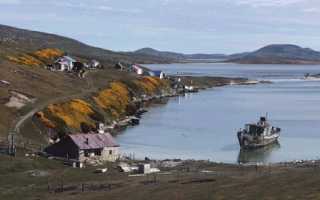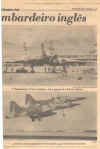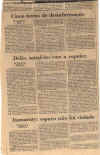|
Seventeen years after the 1816 Argentine uprising the British regained control of the Falklands Isles. However Argentina protested that they were by rights Argentinean property. Much political wrangling went on, and in the mid-1960's the United Nations were called in to try and settle the dispute. These talks were still continuing in April 1982, when Argentine military forces invaded and occupied the islands. This attempt to use force to decide the outcome of the sovereignty dispute led to a state of war being declared by Prime Minister Thatcher. Sketch map of the Falklands A number of missions were planned which involved dropping 21,000lbs of high explosive bombs onto the only runway on the Falklands. This was situated at Port Stanley, and was being used by the Argentine forces to deliver munitions to their troops stationed on the Island. It was also assumed that, given time, the Argentine air force would use the runway as a base for Mirage and Skyhawk fighters. The Avro Vulcan was chosen for these missions.
At this time only three squadrons were still active. Indeed it had been decided by the Ministry of Defence (MOD) that the Vulcan would formerly be retired from active duty in June of that year. In order for the Vulcans to make the journey to Ascension Island and then, ultimately, on to the Falklands it was vital that they could be refuelled in mid-air. Although many Vulcans had retained their refuelling probes (first fitted in the 1960's) the system had not been used for many years, and was inoperative. RAF personnel were required to repair the probes and fuel systems which resulted in some probes being "borrowed" from Nimrod and Hercules planes from
British air bases and, in some instances, as far a field It was decided that five Vulcans should be completely converted for the mission. As well as the overhaul of the fuel system, the conversion process consisted of fitting bomb-carriers, Delco inertial navigation systems, Westering House ECM pods (to prevent detection from Argentine radar installations) , the bottom surfaces were painted sea grey and the throttle controls were modified to allow full power to be taken from the Olympus 301 engines (this had previously been limited in order to promote longevity).
The first brace of Vulcans (XM607 & XM598) left for Wideawake airfield on Ascension Island on the 29th of April. This journey was to last over 4,000 miles and took nine hours to complete. Just over twenty four hours later, in radio silence, and with all navigational lights extinguished, the two Vulcans departed, each carrying 21 one thousand pound bombs. They were escorted by four Victor tankers. Shortly after this another convoy of seven Victor tankers joined them. The thirteen planes climbed to 27,000 feet
XM598 developed pressurisation problems and was forced to return to Ascension Island. This left just one Vulcan enroute to deliver its deadly cargo. It had been planned that the Vulcan would require five mid-air refuellings. However due to
turbulence and additional drag from the ECM pod XM607 actually required an addition
refuelling manoeuvre When XM607 was barely 300 miles from target she descended to her attack height of 250 feet. At this height she was able to fly under enemy radar, and could approach her target without detection. With fifty miles to go the pilot climbed back to 10,000 feet and after using the onboard radar to secure a "picture" of Port Stanley travelled towards the airfield in a diagonal attack run. This was to maximise the chance of the payload actually hitting their designated target.
Although no Vulcans were shot down by enemy fire, not all the missions went as planned. On one mission XM597 was attempting a mid-air refuelling when the refuelling probe snapped off. This left the aircraft without enough fuel to return to Ascension, and so she had to divert to Rio de Janeiro in Brazil. As it was, the Vulcan had to climb into thinner air so as to conserve as much fuel as possible. The two missiles she was carrying were launched to reduce weight and drag, but one of these stuck. Mission orders and other important documents were jettisoned into the sea via the crew hatch. After a "Mayday" signal was sent to the Brazilian authorities clearance was given to XM597. The
captain, Neil McDougall, landed the aircraft with only 2000lb of fuel remaining.
The Brazilian authorities impounded XM597 until the 10th of June but during their stay in Brazil both crew and aircraft were treated well. However the Brazilians did request the "jammed" missile as a souvenir of the Vulcan's visit.
These are the actual Brazilian newspaper reports from 1982 which have been kindly donated to me by Click on each of the above to view the full size version.
The Argentine forces were able to hold out for 10 weeks before surrendering to
the British
task force |





